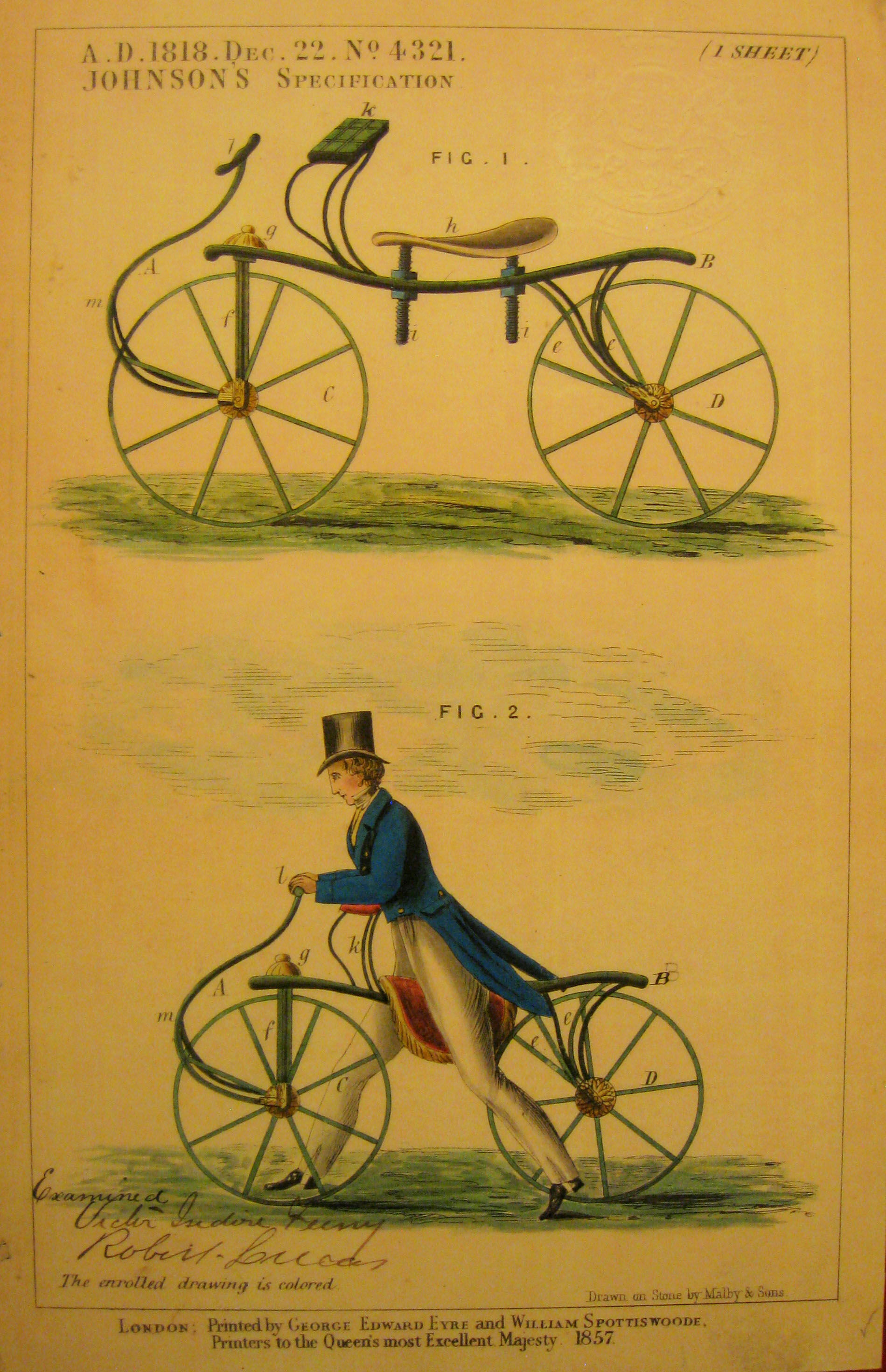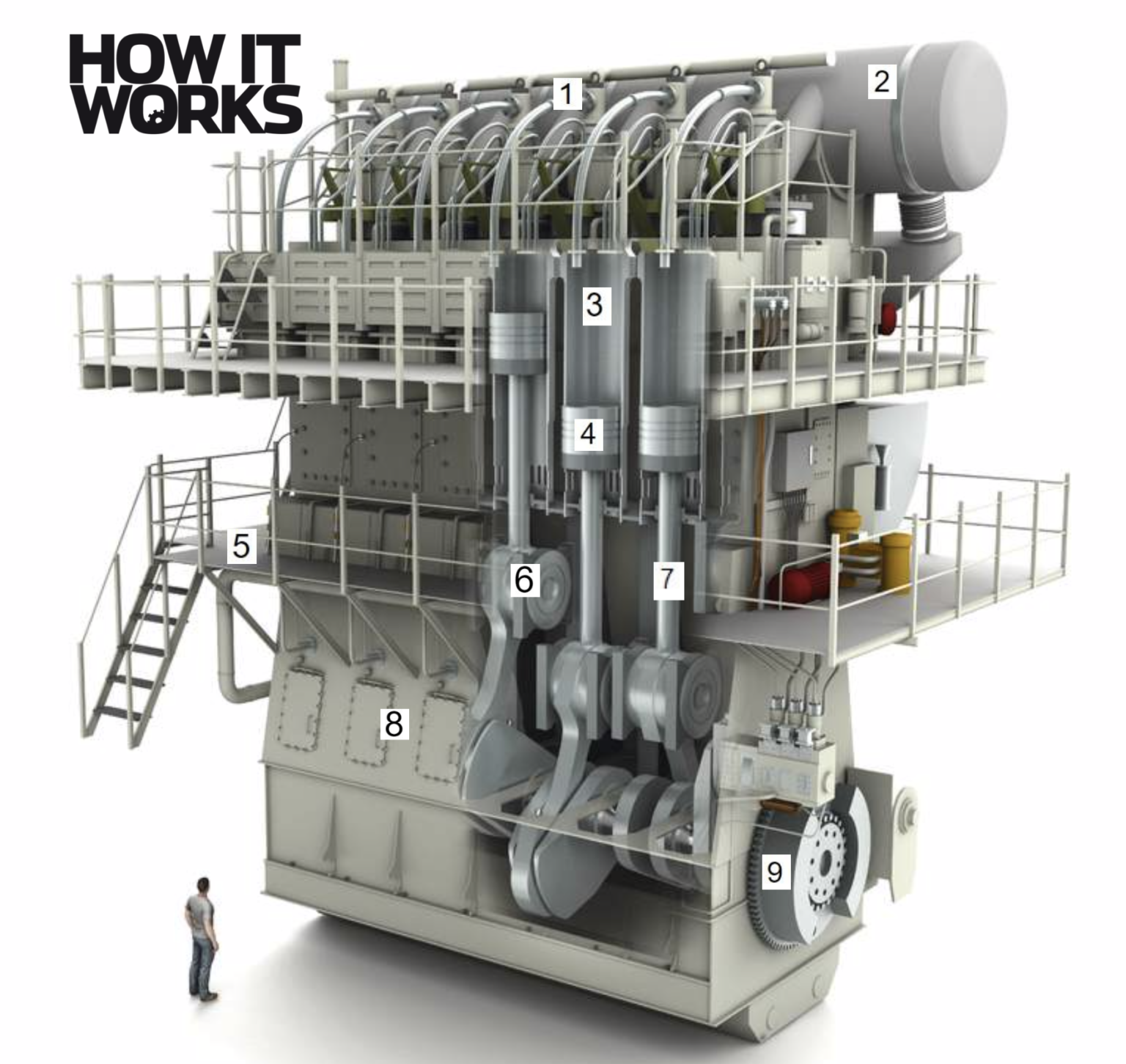06 March 2021
23 February 2021
21 February 2021
08 February 2021
29 December 2020
19 December 2020
25 November 2020
17 November 2020
11 November 2020
01 November 2020
17 October 2020
16 October 2020
11 October 2020
10 October 2020
09 October 2020
26 September 2020
21 September 2020
Very first bike
On 12 June 1817, the earliest form of bicycle, the dandy horse, was driven by inventor and baron Karl von Drais. Dandy horse is actually a derogatory term for what Drais initially called the Laufmaschine or “running machine”. It was later called a vélocipède or draisienne (in French and then English), and then a pedestrian curricle or hobby-horse. This was the first commercially successful two-wheeled, steerable, human-propelled machine, powered by the rider’s feet on the ground instead of the pedals of later bicycles.
The dandy horse was originally called the draisine by the German press after its inventor. Later, the name draisine came to be applied only to the invention of a light auxiliary rail vehicle, driven by service personnel, equipped to transport crew and material necessary for the maintenance of railway infrastructure. Because of their low weight and small size, they can be put on and taken off the rails at any place, allowing trains to pass.

Karl Friedrich Christian Ludwig Freiherr Drais von Sauerbronn. better known as Karl von Drais was born on 29 April 1785 in Karlsruhe and became a noble German forest official and significant inventor in the Biedermeier period. This was an era in Central Europe during which the middle class grew in number, and the arts appealed to common sensibilities. It began with the Congress of Vienna at the end of the Napoleonic Wars in 1815 and ended with the onset of the Revolutions of 1848. Although the term itself is a historical reference, it is used mostly to denote the artistic styles that flourished in the fields of literature, music, the visual arts, and interior design. It has influenced later styles, especially those with origins in Vienna.
In 1815, Mount Tambora in Indonesia erupted in the largest volcanic explosion in recorded history. The estimated 38 cubit miles of ash, pumice and other matter the eruption blasted into the atmosphere blanketed the northern hemisphere, reflecting the sun’s light and cooling the earth’s surface. The following year, 1816, would become known as “the year without a summer”. Temperatures from Mexico to Vienna dropped below freezing in July. Snowstorms and freak rainstorms brought travel to a stop and washed away farms and grain storehouses. This followed close on the devastation of the Napoleonic Wars and caused widespread crop failures and food shortages resulting in the deaths of tens of thousands of horses, which either starved to death or were killed to provide meat and hides.
In the German state of Baden, Karl von Drais realized that there was a need to develop a form of transit that did not rely on the horse. “In wartime,” he wrote, “when horses and their fodder often become scarce, a small fleet of such wagons at each corps could be important, especially for dispatches over short distances and for carrying the wounded.”
“There once was a Baron von Drais
Who observed some swift skaters on ice;
“If they balance on steels
Then why not two wheels –
Yes, a Laufmaschine, that would be nice!”
—Roger Street, 1823

By mid-1817, Drais had created his first Laufmaschine — a two-wheeled vehicle with both wheels in-line and propelled by the rider pushing along the ground with the feet as in regular walking or running. The front wheel and handlebar assembly was hinged to allow steering. Drais’s first reported ride from Mannheim to the Schwetzinger Relaishaus (a coaching inn, located in Rheinau, today a district of Mannheim) took place on 12 June 1817 using Baden’s best road. This was a distance of about 7 kilometres (4.3 miles). The round trip took Drais a little more than an hour, but may be seen as the big bang for horseless transport and was his most popular and widely recognized invention. It was patented by him in France in February 1818 using the term vélocipède. In English, it is also sometimes still known as a velocipede, but that term now also has a broader meaning.
Regardless of its name, it quickly became popular in both the United Kingdom and France with several manufacturers making their own during its brief popularity in the summer of 1819, particularly within a certain circle of aristocratic young men known as “dandies”. The term “dandy” today, when applied to a man, is frequently pejorative, and a synonym for “effete”. But in Regency Britain, to be a dandy was the masculine ideal. More than any other factor, this was due to one man: George “Beau” Brummell. Confidant of the Prince Regent, Brummell nearly singlehandedly reshaped the masculine ideal from the Francocentric “fop” with his powdered wigs, makeup and perfumes, flashy silk breeches and long waistcoats, and yards of frilly laces into a virile, scrupulously clean sport-loving gentleman, wearing trousers, a simple frock coat, riding boots, white shirt and short hair. In many ways, Brummell invented modern men’s clothing, as well as making sport a gentlemanly pursuit.

The German Laufmaschine was a novelty too challenging and exciting for any dandy to pass up. The early models were made entirely of wood and metal and weighed nearly 50 pounds. The best of these were constructed by carriage builders; the more crude ones were cobbled together by blacksmiths. London coach-builder Denis Johnson fashioned a lighter version in 1818 using an elegantly curved wooden frame that allowed the use of larger wheels, yet it still lacked pedals, gears, or a chain. To move forward, the rider pushed on the ground with his feet, leaning forward while sitting on a central saddle. It became fashionable as it was faster than walking. Retailing for around £10 — quite a tidy sum for a bit of a gimmick in the early 19th century (the equivalent of about US $800 in today’s money) — owning and riding a draisine made a statement. The vehicle began to be termed in a derogatory manner as a “dandy horse”.
Still, it had no practical use except on a well-maintained pathway in a park or garden. After marketing began, it became apparent that roads were so rutted by carriages that it was hard to balance on the machine for long, so riders took to the pavements and moved far too quickly, endangering pedestrians. Consequently, authorities in Germany, Great Britain, the United States, and even Calcutta banned its use, which ended its vogue for decades.

Later designs avoided the initial drawback of this device when it had to be made to measure, manufactured to conform with the height and the stride of its rider. An example is Nicéphore Niépce’s 1818 model with a height-adjustable seat for his velocipede built by Lagrange. His design was never adopted by any company that produced dandy horses in large quantities.
One of the dozens of negative caricatures drawn at the time included this quote:
“Then beware Hobby Horsemen, beware of yr fate
Dismount from your Hobbies before t’is too late,
For Farmers, horse doctors and horses providers,
Cry down wooden horses & down walking riders,
whoa hobby, down hobby down.”
Nearly as quickly as it appeared, the dandy horse disappeared. By 1820, the price of oats was back down to pre-1815 levels, and horses were readily available to those who could afford them.
It wouldn’t be until the mid-1860s that two-wheeled transport began to make a come-back. During this period, the first bicycles appeared utilizing pedals on the front wheel, giving it an improved means of locomotion, as well as a scrub brake for the rear wheel; an improvement for stopping over crashing it into a hedge. A German named Karl Kech claimed he was the first to attach pedals to a hobby horse in 1862, but the first U.S. patent for such a device was granted in 1866 to Pierre Lallement, a stroller maker in Nancy. He had exhibited his creation publicly in 1864, before obtaining a patent for his vehicle while just 19 years old.. Aime and Rene Olivier — two sons of a wealthy Parisian industrialist — learned of his invention and decided to create a velocipede of their own. They enlisted Pierre Michaux, a blacksmith and carriage maker, to create the parts they needed for their invention. Michaux and the Olivier brothers began marketing their velocipede with pedals in 1867, and it was this device that became a hit.

This invention enabled the French population to start purchasing much more efficient and easy to use bicycles that were for the first time created in mass quantities by Michaux Company. Even though this first modern bicycle design was made entirely from wood and it would shake the users violently (which awarded it the nickname “boneshaker”), the original dandy horse bicycles faded from use completely.








































